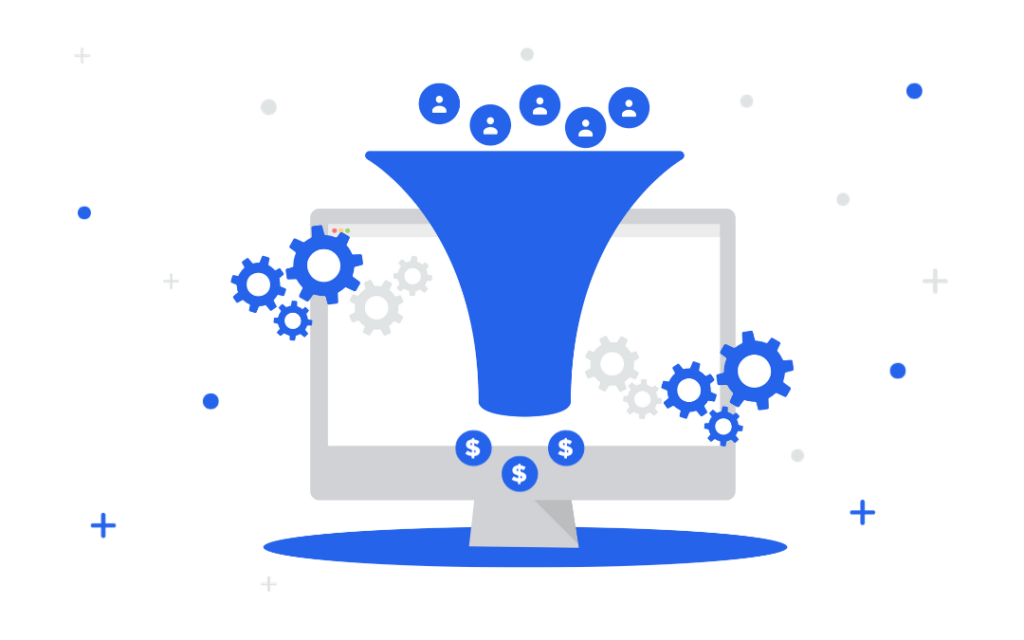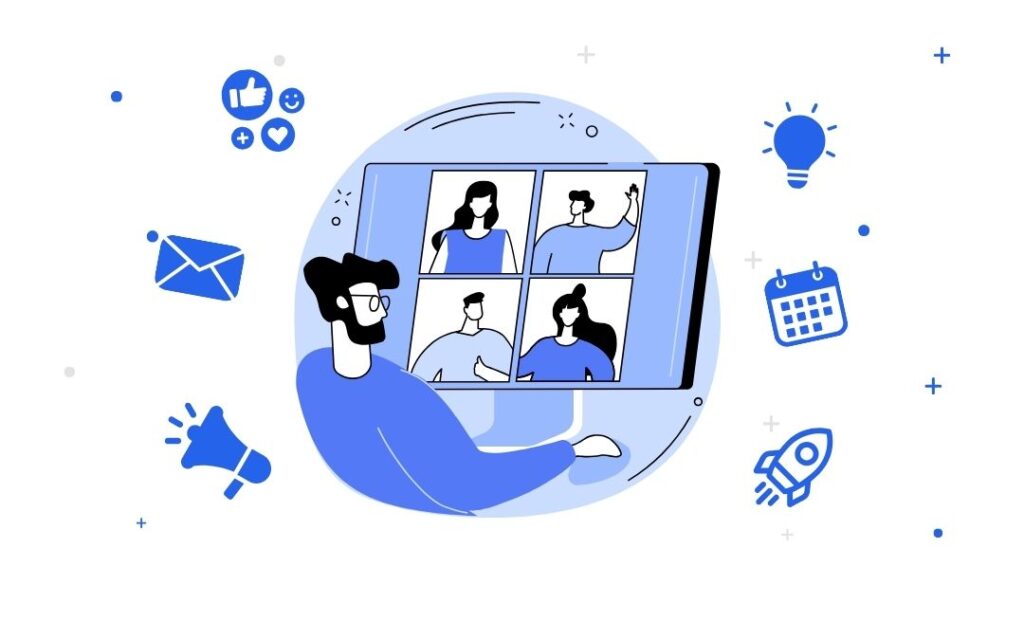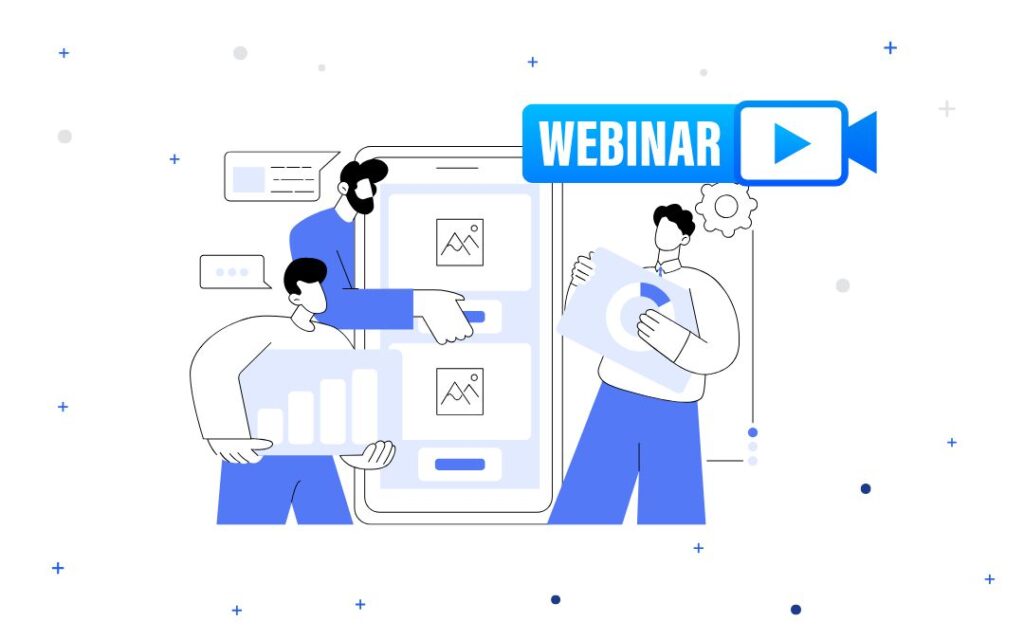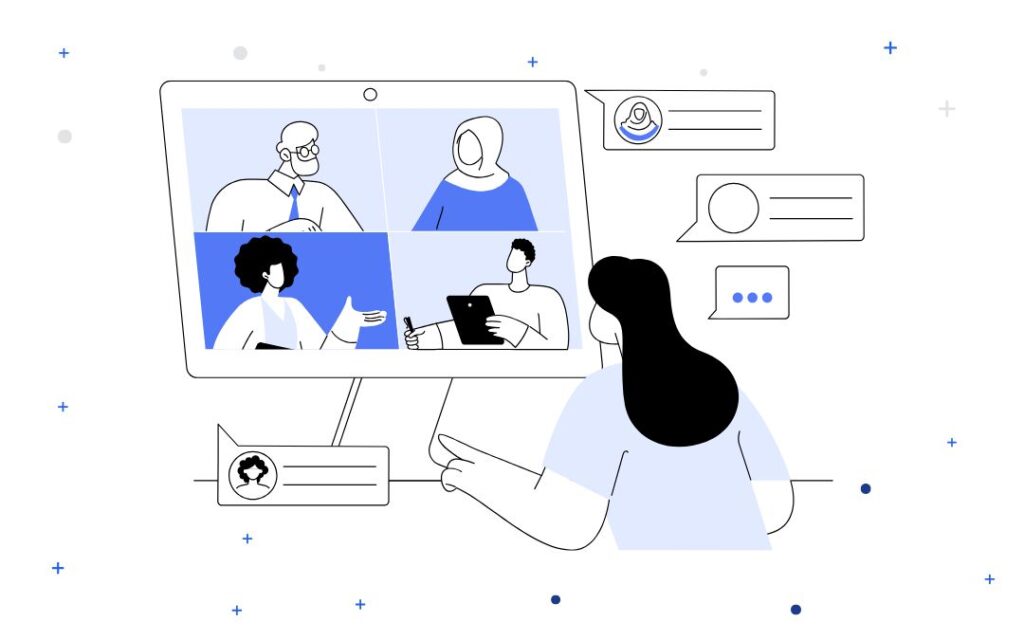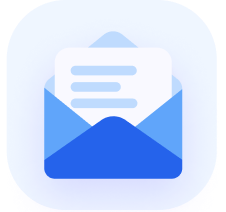Automated webinars are powerful tools for converting casual browsers into committed buyers.
With this content format, you’re not just broadcasting information.
You’re creating a compelling journey that nurtures prospects every step of the way.
A big part of this is using strategic follow-ups and engagements within your webinar funnel. This transforms your online event from a passive viewing experience into an active relationship.
…One that can significantly boost your sales and conversion rates.
This guide takes a closer look at automated webinar funnels – how they work, why you need it, and the steps for creating one.
What is an Automated Webinar?
An automated webinar is a pre-recorded presentation that simulates a live event.
But unlike a live webinar that demands your presence and runs at specific times, an automated webinar is a set-it-and-forget system.
It lets participants sign up and view the content on demand.
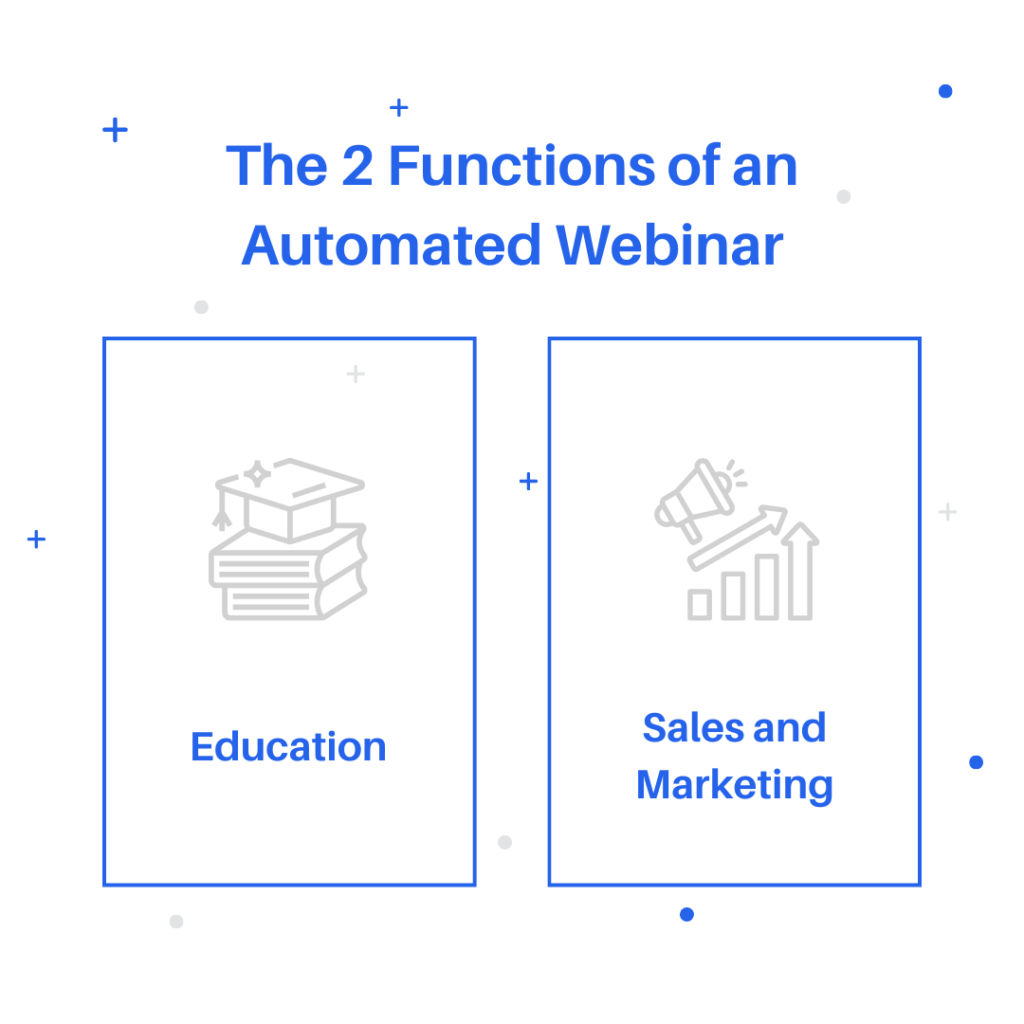
The true genius of an automated webinar lies in its dual functionality:
- It serves as an educational tool.
Automated webinars share knowledge and showcase expertise without the constraints of schedules.
- It operates as a sales and marketing asset that works tirelessly.
Automated webinars bridge the gap between providing value and guiding leads through a carefully curated sales journey — all without the need for real-time effort from you or your team after the initial setup.
Running a webinar on autopilot can include many of the interactive elements of live events, such as Q&A sessions, polls, and special offers.
They can also be fine-tuned based on viewer interactions and feedback so the content stays relevant and engaging.
This sets the stage for a more personalized lead nurturing process.
And with the right webinar automation platform, you can convert webinar viewers into customers at any hour of the day.
The Automated Webinar Funnel Structure
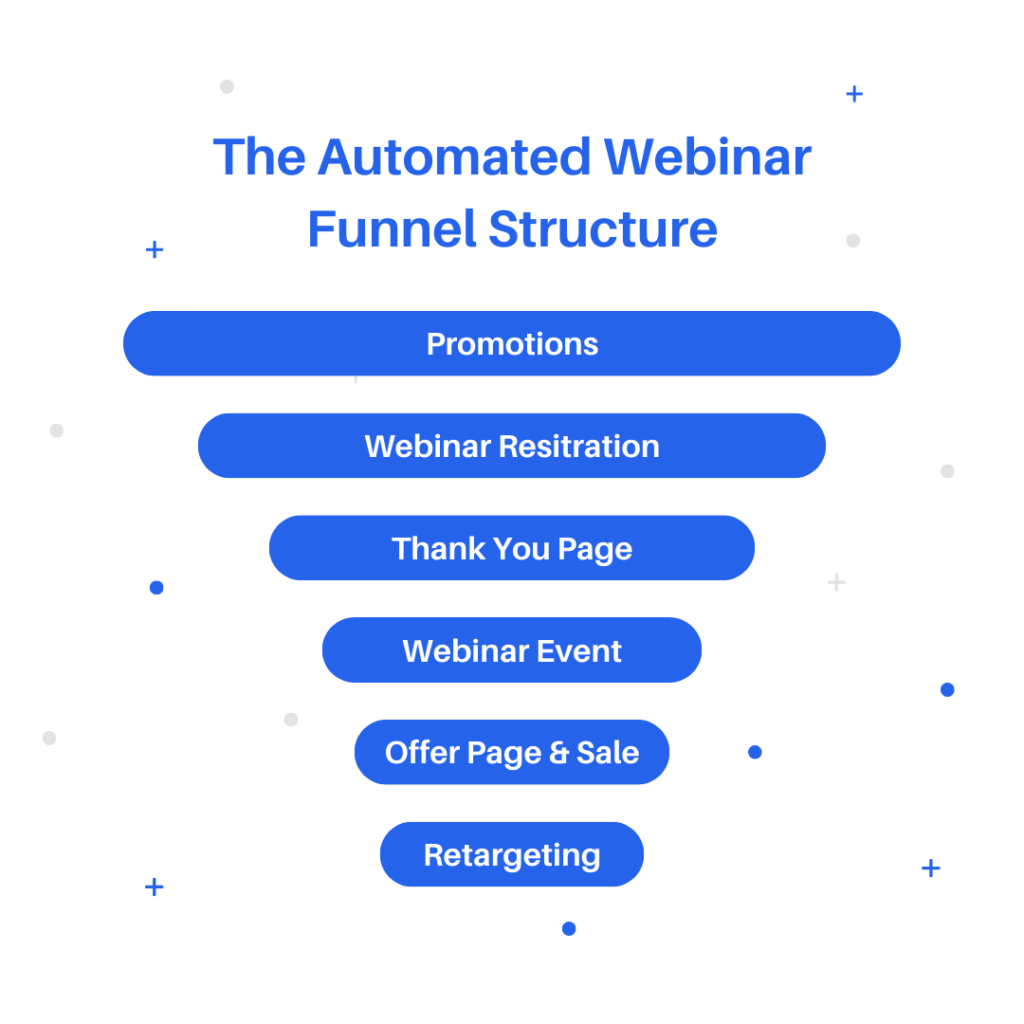
A funnel is a streamlined system that engages your audience all the way from participant to customer.
But what exactly does an automated webinar funnel look like, and how can it work for your business?
There are 6 main stages that you need to consider and plan for.
Stage 1: Promotions
Promotions spark interest and draw potential leads into your webinar funnel.
The best approach is to use a mix of organic and paid marketing channels based on where your audience spends their time.
For example:
On social media, create casual posts that stir curiosity and highlight the benefits of attending your online event.
Email marketing should tap into your existing customer base with personalized invites, while search and social-optimized content can pull in organic traffic.
You can also use paid ads on search engines or social platforms to target specific demographics that align with your content.
The goal is to get as much traffic as you can from these sources. This way, you maximize your reach and create multiple touchpoints with potential customers.
Stage 2: Webinar Registration
The registration phase is your first interaction with potential leads. And it’s where you can turn visitors into attendees.
Only 42% of people attend a typical marketing webinar after signing up. So you need to make your efforts count.
A clear and simple registration landing page does the trick. Show your visitors what they’ll learn and why the webinar is worth their time.
You can also add social proof like testimonials or expert endorsements to encourage sign-ups from your webinar registration email.
Most importantly, keep the registration form short by asking for the most essential details only, like their name and email.
This helps you avoid losing people halfway through.
Stage 3: Thank You Page
After registration, a thank you page serves as the first step in lead nurturing within your funnel.
It provides immediate value and confirms the webinar details like the access link and broadcast schedules.
But that’s just the beginning.
Your thank you page is also a prime opportunity to deepen the engagement with your new leads (so they’re more likely to turn into customers down the line).
You can offer a teaser of what’s to come in the webinar or provide a free resource, like an e-book or exclusive article that complements the webinar topic.
A good tip is to make your thank you page personal and reflective of your brand’s voice.
You can even include a video message from the host or presenter.
Stage 4: Webinar Event
The event page is where your webinar comes to life.
It’s the virtual room where your audience will gather. So, you need to optimize it for focus and engagement.
A clean, user-friendly interface that supports interactivity, such as live chats or feedback polls, can enhance the viewer’s experience.
The event page should also be technically robust for a smooth and uninterrupted flow of discussion.
This means that the webinar automation platform you choose should be able to support integrations that are compatible across different software and devices.
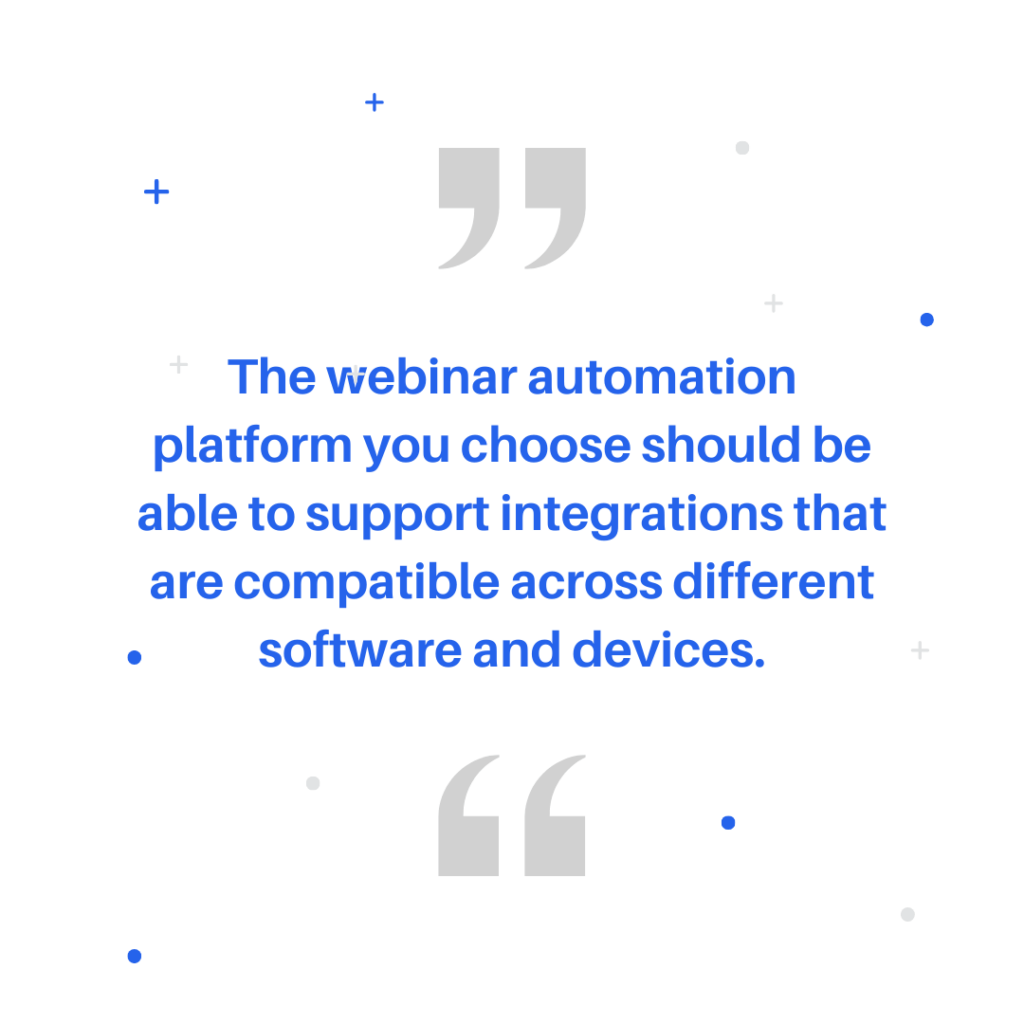
AEvent for instance has over 50 native integrations that let you automate your online events and webinar funnels the way you like it.
Stage 5: Offer Page and Sale
After delivering valuable content from your webinar, the next stage in your funnel is guiding attendees to your offer.
The offer page should be a natural extension of the webinar.
Your goal here is to position your product or service as the logical next step for attendees to solve their problem.
To craft an effective offer page, consider the journey your attendees have been on.
They’ve been educated and engaged – now they’re ready to act. So, you need to make the buying process clear and easy to follow.
For instance, remove any elements in the offer page that could divert attention away from your call-to-action (CTA).
The webinar CTA itself should be prominent and compelling.
It’s best to use persuasive language that encourages immediate response, such as “Start your free trial” or “Get your solution today.”
Each additional step from offer to purchase can lead to drop-offs, so aim for a simple, secure, and speedy checkout.
Stage 6: Retargeting Strategies
Retargeting is a special step within your automated webinar funnel.
That’s because your interaction with customers doesn’t end once you make a sale. You also need to re-engage webinar attendees who haven’t made the decision to buy yet.
This critical phase places your message in the periphery of these potential customers and gently nudges them towards conversion.
Using a variety of retargeting tactics can help you maintain contact with prospects without seeming intrusive.
For example, retargeting ads can be timed to appear when your prospects are most likely to be considering their options, based on their previous engagement with your webinar.
This timing is essential as it leverages the period when your brand is still fresh in their minds.
You can also personalize your webinar replay emails and offers based on the specific interests they expressed during the webinar.
This level of personal attention can be the deciding factor that turns a maybe into a yes.
How to Create an Automated Webinar Funnel
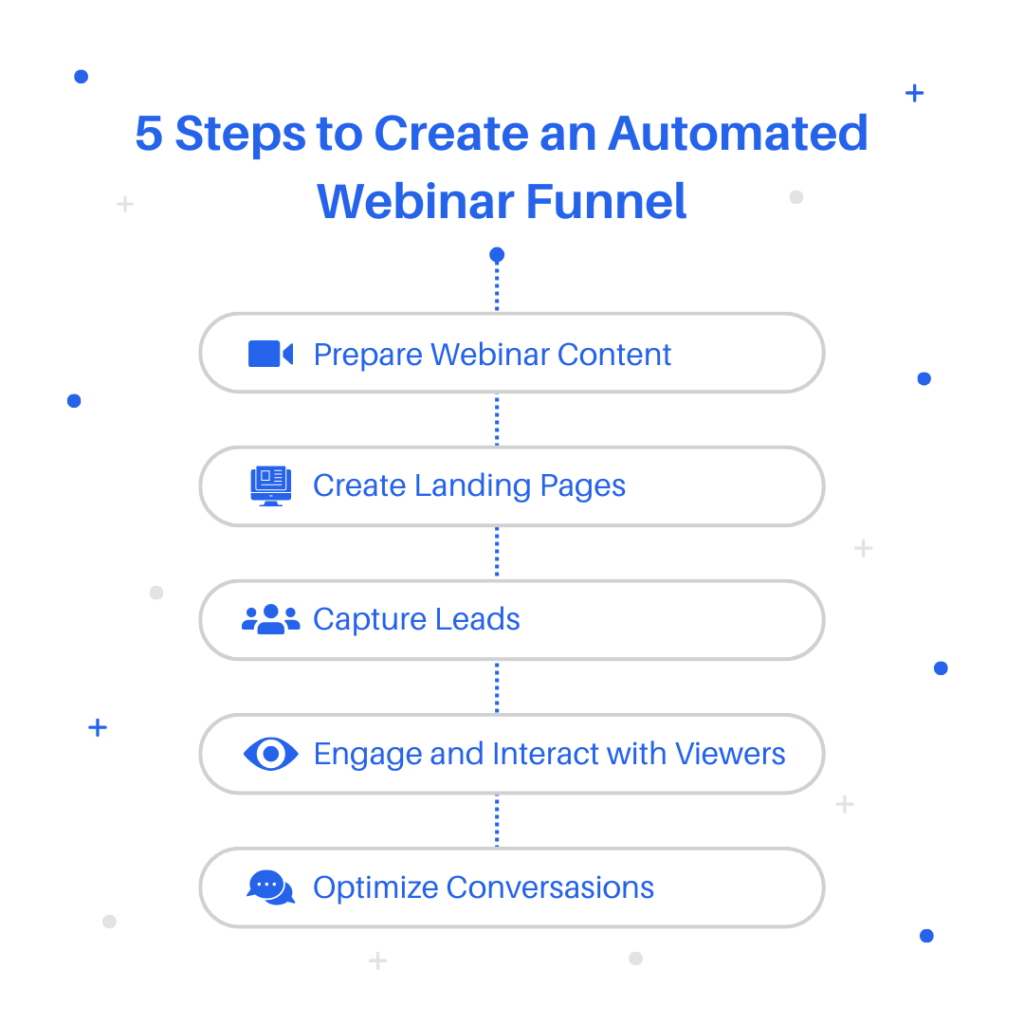
Creating an automated webinar funnel is a strategic process that involves piecing together a seamless journey for your leads—from their first interaction to the final sale.
This journey needs to be designed to nurture leads at every step and convert them into loyal customers.
To build your own automated webinar funnel, these are the 5 steps you can follow.
Step 1: Prepare Webinar Content
Begin by developing content that not only captivates and retains attention but also remains relevant over time.
Your webinar should act as a comprehensive resource that offers actionable insights and showcases your expertise.
Aim for a narrative that educates and aligns your audience’s needs with the solutions your offer provides.
Don’t forget to script and rehearse your presentation to ensure a smooth delivery that appears natural – even though it’s automated and pre-recorded.
Step 2: Create Landing Pages
Your landing page is often the first impression potential leads will have of your webinar, so it needs to make an impact.
It should be meticulously crafted to captivate your target audience with a compelling headline, engaging visuals, and persuasive copy that speaks directly to their pain points.
Make sure the sign-up process is streamlined—asking for just enough information to be useful without being burdensome.
You can also A/B test different elements of your landing page to discover what converts best.
Step 3: Capture Leads
When it comes to registration, the goal is to gather enough information to enable effective follow-up without deterring sign-ups.
Consider using this opportunity to gather demographic information, preferences, and pain points that can help tailor future marketing efforts.
Integrate your sign-up form with your customer relationship management tool to automate lead data collection and follow-ups.
Step 4: Nurture Viewer Engagement
During the webinar, leverage interactive elements to create a memorable experience.
Polls, quizzes, and surveys can not only keep viewers engaged but also provide valuable insights into your audience.
Offering downloadable resources—such as worksheets, checklists, or eBooks—can add value to the experience.
And they can serve as a tangible reminder of your brand after the webinar concludes.
Step 5: Optimize for Conversions
As you wrap up your webinar, your call-to-action (CTA) should be clear, compelling, and easy to follow.
Guide your attendees towards the next steps with confidence.
If your goal is to sell a product, make the transition from webinar viewer to shopper seamless.
If your aim is to schedule calls, ensure your booking system is intuitive.
Your CTA should resonate with the content of the webinar. This will make the decision to take the next step a natural and obvious choice for participants.
Next Level Webinar Automation with AEvent
Automated webinars can become even more streamlined when paired with the right funnel structure.
You can capture leads and turn them into customers faster.
But it’s important to remember that success with an automated webinar funnel doesn’t happen overnight.
It requires continuous refinement, tracking, and optimization.
If you’re planning to integrate this into your sales and marketing strategy, AEvent is here to help.
Our platform supports integration with automated funnel software so you can collect registrations for your event with ease.
Book a demo to explore the power of AEvent today!

